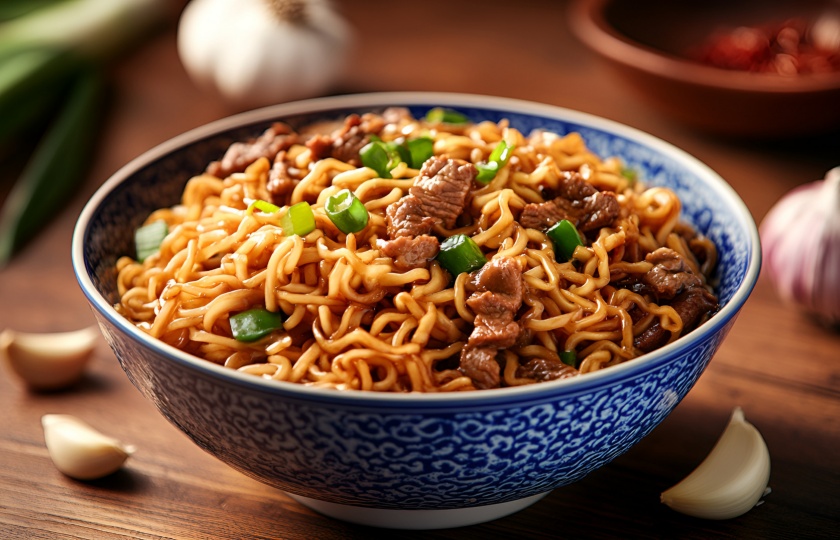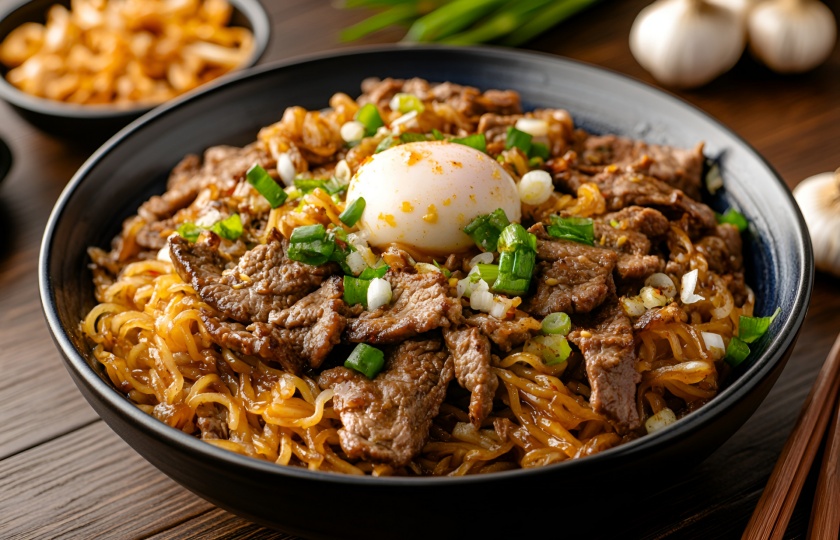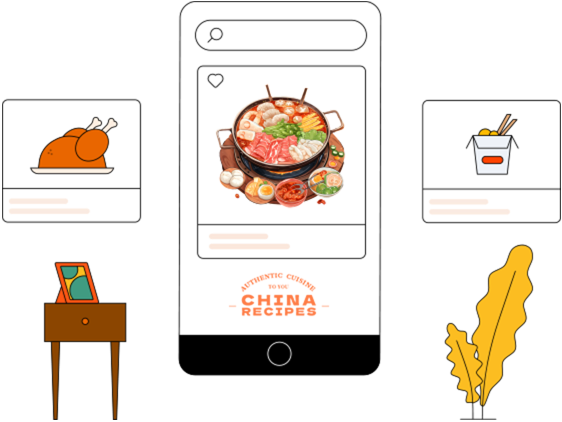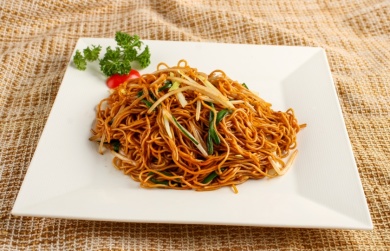Is Chow Mein Gluten - Free? The Truth Revealed

Chow mein is a delicious snack. But is it gluten-free? Let's take a look together!
Is Chow Mein Gluten-Free?
Chow mein is made by stir-frying noodles with vegetables. Whether it contains gluten mainly depends on the noodles and seasonings.
Most chow mein in daily life is made with noodles made from wheat flour, and wheat contains gluten. Secondly, soy sauce, which is commonly used in chow mein, also contains gluten. Therefore, the chow mein you eat in daily life is very likely to contain gluten.
If you want gluten-free chow mein, you can choose the following alternative options:
Rice noodles or wide rice noodles: Gluten-free, with a smooth and delicate texture, and can be paired with various sauces.
Corn noodles: They have a chewier texture and are an excellent gluten-free choice.
Buckwheat noodles (100% buckwheat): Buckwheat itself is gluten-free, but be careful that wheat flour may be mixed in, so choose products labeled "gluten-free".
Sweet potato vermicelli or konjac noodles: Gluten-free and low in calories, suitable for people following a light diet.
In addition, among seasonings, soy sauce is the most common gluten-containing seasoning. If you want a gluten-free version, you can use gluten-free soy sauce or coconut soy sauce as a substitute.
What Noodles Are Gluten-Free?
In our daily lives, besides rice noodles, wide rice noodles, corn noodles, buckwheat noodles, sweet potato vermicelli, and konjac noodles, there are many other gluten-free noodles, as follows:

Fine millet and brown rice noodles: They have a bouncy texture and are suitable for the elderly and children.
Wide buckwheat noodles: They are rich in dietary fiber and are a great choice for weight loss and light meals.
Wide black rice noodles: They have a firm texture and a strong black rice flavor.
Wide rice and coconut oil noodles: Adding coconut oil to rice can make the noodles more silky and tastier.
Wide brown rice noodles: They have a chewy texture and are low in calories.
Is Chow Mein High in Fat?
A certain amount of oil is indeed used in the process of stir-frying chow mein, which increases its calorie content, but not all chow mein is high in fat.
Amount of Cooking Oil Used
The main source of fat in chow mein is the amount of oil used during cooking. If you stir-fry the noodles with a large amount of oil or use animal oil (such as lard) to enhance the flavor, the fat content will be higher. However, if you reduce the amount of oil used and choose healthy oils (such as olive oil and rapeseed oil), you can reduce the fat content.
Type of Noodles
The choice of noodles is also very important. Traditional wheat noodles have a relatively low fat content, while egg noodles or fried instant noodles have a high fat content. Therefore, if you want to reduce fat, you can choose whole wheat noodles, rice noodles, konjac noodles, or sweet potato vermicelli.
Choice of Ingredients
High-fat ingredients: Such as fatty beef, bacon, sausage, pork, etc., will increase the fat content.
Low-fat ingredients: Such as chicken breast, shrimp, lean beef, tofu, etc., are low-fat and high-protein foods.
Add more vegetables: Such as green vegetables, bean sprouts, carrots, etc., which are rich in dietary fiber.
Use of Sauces
Sauces like sesame paste, peanut butter, and heavy-oil seasonings will increase the fat content. If you want a fresh taste, you can choose soy sauce, lemon juice, vinegar, or low-fat hot sauce for seasoning.
Does Chow Mein Contain Additives?
Chow mein may contain additives.
Noodles Themselves
The noodles commonly used in chow mein mainly include fresh noodles, dry noodles, hanging noodles, and instant noodles. Different types of noodles may contain different additives.
Handmade noodles: Made with flour, water, and eggs by yourself, they basically do not contain additives.
Dry noodles bought in the supermarket: Most are made of wheat flour, water, and salt and do not contain added preservatives.
Hanging noodles: Some brands may add gluten strengtheners (such as vital wheat gluten), preservatives (such as calcium propionate), or food improvers, but the usage amount of regular brands is within the safe range.
Instant noodles: Some instant noodles are fried and may contain antioxidants, thickeners, or flavor additives. If you want a healthier chow mein, it is recommended to choose non-fried noodles.

Seasonings
The soul of chow mein lies in the seasonings, and some seasonings may contain food additives.
Basic seasonings: Such as light soy sauce, dark soy sauce, vinegar, and salt. Most of them are naturally fermented, but some soy sauces may additionally contain preservatives (sodium benzoate), flavor enhancers (monosodium glutamate), or caramel color.
Sauces such as oyster sauce, sweet bean sauce, and bean paste: Some brands may add thickeners, food preservatives, or monosodium glutamate. If you want to avoid them, choose naturally fermented ones.
Chicken essence and monosodium glutamate: They belong to food additives. If you want to reduce your intake, you can use natural ingredients (such as shiitake mushroom powder and dried small shrimp powder) to enhance the flavor.
Other Ingredients
Processed foods: Such as ham sausage, bacon, and crab sticks may contain preservatives, pigments, phosphates, etc.
Fresh ingredients: Choose more natural ingredients such as chicken, beef, vegetables, and eggs, which do not contain additives.
Does Chow Mein Contain Starch?
Chow mein contains starch.
You should know that the main ingredient of chow mein is noodles, and most noodles are made from wheat flour, and the main component of wheat flour is starch.
If you use wheat noodles, they contain about 70 - 75% starch.
If you use other types of noodles, such as rice noodles, corn noodles, sweet potato noodles, etc., they are also mainly made of starch, just from different sources.
Does Chow Mein Contain Protein?
Chow mein contains protein. However, the protein content of chow mein mainly depends on the type of noodles and the choice of ingredients.
Noodles
Traditional wheat noodles contain 10 - 15% protein, mainly from the gluten proteins (gliadin and glutenin) in wheat.
Whole wheat noodles, buckwheat noodles, egg noodles, etc. have a higher protein content.

Ingredients
Meat: Chicken, beef, pork, shrimp, etc. are rich in protein.
Eggs: Eggs contain high-quality protein with a high protein absorption rate.
Soy products: Tofu, dried tofu, bean sprouts, etc. are excellent sources of plant protein.
Seafood: Squid, clams, fish, etc. are rich in protein and amino acids.























